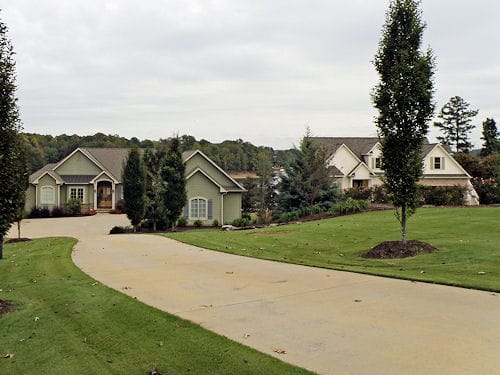HOA committees can be incredibly helpful to boards, and the HOA as a whole. A well-organized committee can shorten the long-to-do list for busy board members, and build a more productive and cohesive community. However, it’s important for HOAs to only create committees that are needed. Each committee must have a clear and defined purpose, and members must understand what their obligations and limitations are. Otherwise, these groups can end up creating more problems than they solve.
Click here to download our committee charter template
By creating committees, boards give homeowners the opportunity to help shape the direction of the community, and make contributions that have a real and significant impact.
Types of committees
Depending on the size and needs of your HOA, you may only have one or two committees, or several volunteer groups. Below are a few of the most common committee types, but an HOA could create a committee for almost anything (provided your governing documents don’t explicitly limit or prohibit committees).
Architectural Review Committee – An architectural review committee (ARC), sometimes referred to as an architectural committee, is tasked with implementing architectural guidelines established by the HOA to maintain aesthetic standards within the community, and preserve the value of the development. The ARC reviews applications for modifications, additions, or architectural changes in the community, and, depending on how it operates, may make recommendations to the board. The board may still have the final say about architectural change requests.
Financial Committee – This group handles budgetary concerns, including managing investments and tracking expenses. This can be a challenging role if members don’t have any financial experience, but if you’ve got an accountant in your community, having a financial committee can be a real asset.
Maintenance Committee – A maintenance committee helps with maintenance items that are the responsibility of homeowners. For example, if 20 owners want to have a contractor wash their windows (at their expense), they can get a better rate if they all hire the same vendor. The owners on the maintenance committee will organize this arrangement on behalf of the other homeowners. Encouraging owners to complete regular maintenance on their homes by helping them locate someone who will complete the job at a competitive rate helps the entire association in the long run.
Covenants Committee – This group assists the board in matters of rule compliance and violations enforcement. The covenants committee will monitor the community and enforce violations for homeowners who do not comply with rules and regulations established in the HOA’s governing documents.
Social Media Committee – This is a rather new committee, but can be very useful to HOAs that regularly take to Facebook or some other social platform to communicate. A social media committee can help moderate online forums and add announcements, schedules, documents or other content to social channels to help keep everyone updated and informed. If the community also has an HOA website, this committee may be asked to make regular updates to the site as well.
Community Awareness Committee -Also known as Neighborhood Watch or Citizen Patrol, the community awareness committee establishes safety guidelines and works with local law enforcement to ensure residents remain safe. This committee may organize projects with other HOA committees in the vicinity, and work together to achieve the same objectives.
Social Committee – A social committee organizes events that encourage homeowners to get to know each other or build meaningful relationships with one another. The very best HOA committees enhance the value or attractiveness of the community, and a social committee can do this by making the development a fun place to live.
Setting up a committee
As mentioned before, a solid committee must have structure and a directive. In some cases, your governing documents will have committee guidelines for you to follow. In such cases, there will be rules in place that dictate what types of standing committees the organization should have, the size of a committee, who is qualified to be a member, how long members can serve, how they can be removed if necessary, and so on. If these guidelines exist, the board must follow them when setting up a new committee.
Creating HOA committee charters
If there are no existing committee guidelines, the board must create HOA committee charters. A charter is a document that clearly states a committee’s mission statement or purpose, defines its budget, details roles and responsibilities, composition, the frequency of meetings, covers any requirements for minutes, how information is to be reported to the board, decision-making abilities, and limits of authority. The committee charter may also have a timeframe, which details how long the committee will exist.
Newly-created committees need charters so that they understand how to operate. A detailed, well-written charter can set a committee on a stable path to success.
The components of a committee charter generally include five distinct areas:
1. The committee’s mission statement or charge
This statement explains why the board established the committee and outlines the group’s main purpose or objectives.
2. Powers and authority of the committee
This portion of the charter details how members of the committee can fulfill goals and objectives. This also lets members know what they can and cannot do.
3. Composition of the committee
This section contains the guidelines for appointing the committee chair, members, officers, staff members and outside members, if applicable. Just like the HOA board, each committee should have an organizational structure. Even if the group is small, there should at least be a chair who leads committee meetings and handles the agenda. There should also be a committee secretary who is responsible for taking the minutes of every meeting and making sure they are published or saved to a designated location. Finally, there should be information about how long members can serve on the committee.
4. Roles and responsibilities
Board charters specify how frequently committees will meet, whether committee members are required to have agendas and submit minutes, and what the quorum requirements are.
5. Authority to make decisions
Generally speaking, board committees have little or no power to make a “final say.” A notable exception is the executive committee, which has limited power and authority under certain circumstances. The board is usually responsible for making final decisions, and this could be for practical and legal reasons. Even though most board members are volunteers, they should have access to a lawyer if they encounter a difficult issue or situation. They can secure good advice on how to proceed with an issue. Committee members are also volunteers, but they may not have access to such resources, and in rare instances, could end up in court if a problem between the group and a homeowner escalates.
Several charters will also add supplemental information regarding the internal governance practices of each committee. These details may include:
- Requirements for taking attendance
- Details about when the committee meets
- If meetings are open to the public
- How meeting minutes are recorded (and by whom)
- The level of access to sensitive information granted to assistants
Some boards may choose to include all of the items mentioned when creating a committee charter, while others may only include a few. Charters are designed to meet the needs of the committees that will refer to them. The extent to which a charter can meet a committee’s needs relies greatly on how well it is written.
Set your committees up for success
Once a committee charter has been created, there are a couple of additional things you’ll want to consider before letting your new committee get to work. The HOA board must create a clear job description for all committee members. This ensures that every person knows what they are responsible for, and what limitations they must abide by (there’s nothing worse than having someone on your team who doesn’t contribute, but does take all the credit for other people’s hard work). Job descriptions should be detailed to prevent misunderstandings and minimize conflicts between boards, committees, and homeowners.
Finally, make sure the committee has all of the information and resources it needs to be effective. For example, an architectural review committee should have access to and be familiar with any state rules governing architectural and aesthetic reviews within associations. Give committee members tips or ideas on how to streamline and simplify processes, and make sure they can reach the board if they need to.
Conclusion
Committee members are volunteers who devote their time and energy to the group to help keep their community in good order. A strong committee can be an invaluable asset to a board, but a disorganized or poorly informed committee can create more problems. It’s critical that committees know what is expected of them, and what the are entitled to do.
On a final note, remember to thank your committee members for doing a good job. Don’t overlook the effectiveness of a simple thank-you. Committee members whose contributions are acknowledged are more likely to continue working hard and remain on the team, and that means you don’t have to keep looking for new candidates to fill committee member roles.
Download Template
Download our free committee charter template






















